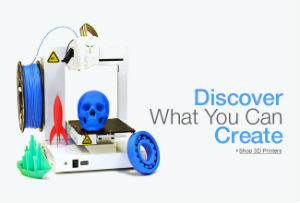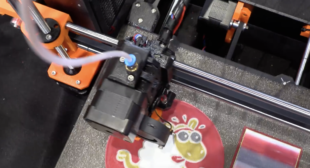
Top Business Ideas Combining 3D Printing, AI, and Blockchain
The convergence of 3D printing, artificial intelligence (AI), and blockchain is reshaping global industries. These three frontier technologies are individually transformative — but together, they unlock entirely new business models, supply chains, and marketplaces. Entrepreneurs who embrace this trifecta can build category-defining companies.
This article explores the most promising business opportunities at the intersection of 3D printing, AI, and blockchain, offering practical ideas you can build in the coming decade.
The first AI designed 100% for 3D printing!
1. Decentralized 3D Design Marketplaces (Blockchain + 3D Printing)
Imagine an NFT-powered marketplace for 3D printable designs, where creators can license and sell their models directly to manufacturers or hobbyists worldwide.
How it works:
-
Designers mint 3D CAD files as NFTs (on Ethereum, Polygon, or Solana)
-
Buyers purchase and download the files with verifiable licenses on-chain
-
Smart contracts ensure automatic royalties for secondary sales
-
Optional DRM locks files to specific 3D printers or number of prints
Revenue Streams:
-
Transaction fees on sales
-
Premium listing subscriptions
-
Enterprise licensing and bulk deals
Why it works: It solves intellectual property theft in the 3D design world and builds trust for cross-border transactions.
2. AI-Driven 3D Part Optimization as a Service (AI + 3D Printing)
This model uses AI to analyze CAD files and automatically optimize them for strength, material use, and print speed before manufacturing.
Features:
-
AI generative design algorithms
-
Topology optimization for minimal material usage
-
Predictive simulations for stress testing
-
Cloud-based SaaS platform for engineers
Revenue Streams:
-
Monthly SaaS subscriptions
-
Pay-per-optimization for large projects
-
White-label API for CAD platforms
Why it works: Companies save money and accelerate time-to-market while reducing material waste, which directly improves profitability and sustainability.
3. Blockchain-Verified Supply Chains for 3D Printed Parts
Supply chain fraud and counterfeit parts are major risks. Blockchain can track every 3D-printed component from design to delivery.
How it works:
-
Each part receives a unique digital identity (NFT or token)
-
Production and shipping events are recorded on-chain
-
Customers can verify provenance via QR or NFC tag
Use Cases:
-
Aerospace and automotive spare parts
-
Medical implants and prosthetics
-
Luxury goods and collectibles
Revenue Streams:
-
SaaS platform fees from manufacturers
-
Smart contract integration services
-
Data monetization (analytics of part flows)
Why it works: It builds trust, compliance, and security into the 3D printing supply chain — a key need for regulated industries.
4. Tokenized 3D Printing Networks (Blockchain + AI)
Build a decentralized manufacturing network where anyone with a 3D printer can earn crypto tokens by printing on-demand parts.
Key Features:
-
Blockchain-based reputation and payout system
-
AI routing engine that matches jobs to local printers
-
Escrow smart contracts release funds when quality is confirmed
Revenue Streams:
-
Network fees on every print order
-
Token value appreciation
-
SaaS fees for enterprise print requests
Why it works: This creates an Uber-style distributed factory network, reducing shipping costs and carbon footprint while enabling small businesses to monetize idle printer capacity.
5. AI-Generated 3D Content for Virtual & Physical Worlds
Combine AI’s generative power with 3D printing and blockchain to build a content creation platform for both digital assets and physical products.
Example niches:
-
Gaming: AI-generated 3D avatars, skins, and props minted as NFTs
-
Fashion: AI-designed 3D printed jewelry and accessories
-
Architecture: AI-generated interior models printed as miniatures
Monetization:
-
AI content subscriptions
-
NFT marketplace fees
-
Print-on-demand production services
Why it works: This bridges the metaverse and the physical world, giving creators a new monetization path.
6. DAO-Based R&D Platforms for 3D Tech Innovation
Launch a research DAO (decentralized autonomous organization) that funds and governs open-source 3D printing and AI innovation.
Mechanics:
-
Token holders vote on which projects receive funding
-
IP and patents are fractionalized as NFTs
-
Researchers are paid in governance tokens
Revenue Streams:
-
Token sales and staking
-
Licensing IP developed by the DAO
-
Grants from enterprises and governments
Why it works: It aligns global talent around solving tough R&D challenges while democratizing access to intellectual property.
7. AI-Powered Predictive Maintenance for 3D Printers
Downtime kills profit margins. An AI system that monitors and predicts maintenance needs for industrial 3D printers could save manufacturers millions.
Key Features:
-
IoT sensors collect data on print quality and machine health
-
AI models predict breakdowns and trigger preventative service
-
Blockchain logs maintenance history for resale value tracking
Monetization:
-
Subscription-based monitoring
-
Hardware sensor sales
-
Performance-based cost savings contracts
Why it works: It turns maintenance from reactive to proactive, increasing uptime and ROI for 3D printing farms.
8. Real-World Asset (RWA) Tokenization of 3D Printed Products
This idea uses blockchain to fractionalize ownership of high-value 3D-printed products (e.g., art, aerospace parts, medical devices).
Example:
-
A limited run of collectible 3D-printed sculptures
-
Each piece is represented by 1,000 fractional ownership tokens
-
Owners receive royalties from rentals, resales, or exhibitions
Revenue Streams:
-
Token minting and transaction fees
-
Artist/creator commissions
-
Marketplace fees for trading tokens
Why it works: It opens up new capital markets for physical assets while proving authenticity and scarcity.
Final Thoughts
The future belongs to companies that integrate 3D printing’s physical power, AI’s cognitive capabilities, and blockchain’s trust layer into seamless systems. These technologies are converging into a new industrial stack — one that will reshape manufacturing, commerce, and digital ownership.
Whether you build a tokenized manufacturing network, an AI-driven 3D SaaS platform, or a blockchain-backed design marketplace, there has never been a better time to start.
Crypto Rich ($RICH) CA: GfTtq35nXTBkKLrt1o6JtrN5gxxtzCeNqQpAFG7JiBq2
CryptoRich.io is a hub for bold crypto insights, high-conviction altcoin picks, and market-defying trading strategies – built for traders who don’t just ride the wave, but create it. It’s where meme culture meets smart money.













Comments